A side blog for fantastic taxonomy and deranged schemas.Main @dedederedeconstructivistRacists will be blocked on sight. Stormfront shit in my Asks or submissions will not be tolerated.
Don't wanna be here? Send us removal request.
Text
Vampires, Part 2: Dracula and the Neoclassicals

Below the cut, The Pedant turns its eye to the typical Vampires of most modern worlds - Dracula, and the Common Post-Stoker Vampire. Read on to discover the taxonomy of the Neoclassical Vampire.
No taxonomy of the Vampire can begin without due regard to the 'father of vampires', Dracula. The immortal Impaler, transformed for his bloodthirsty sins into the first or perhaps greatest of his kind, is a recurring motif among the vampire specimens of the Anthropophilic Universes. Sometimes this Dracula is closely related to the historical figure, but more frequently the relationship is strictly nominal. This is perhaps fortunate, as the Pedant has already recorded the historical Vlad Dracula as Homodraco homodraco subsp. dracula - a taxon we will not be changing, as it is clear from the gentleman's name that he was a member of a Draconic lineage that simply, through convergent evolution, resembled Homo sapiens. The draconic status of Dracula has also produced some theories that the vampiric condition is in some way linked to Dragons - a thesis that the Temple's various camps all firmly reject, as it is wholly unevidenced.
Turning to the Vampiric Dracula now, we find in him an elegant type species of the common or 'neoclassical' vampire - not the earliest known description, but certainly the best known. The common vampire is distinguishable from the family of classical protovampires and the more divergent post-Stoker vampires, though it combines certain elements of the former and is largely responsible for the enduring presence - thanks to the well known Universal Ripple Effect of particularly prominent descriptions - of Common Post-Stoker Vampires in other realities.
Dracula and his cognates are immortal beings, originating from a single ancestor cursed by God, who exhibit obligatory and exclusive haemophagia, non-exclusive nocturnal habits, the complete cessation of ordinary metabolism, enhanced senses, and several characteristic supernatural characteristics. They are driven into a largely involuntary slumber during the day, vulnerable to sanctified objects and symbolism, and unable to freely cross running water - negative manifestations of their curse that are balanced by the ability to manipulate the weather, shapeshift into mist and various night creatures (and to control such creatures), and to walk the spaces inbetween. They create further vampires through feeding, with a non-obligatory mutual exchange of blood in Dracula that, in the common post-Stoker vampire, becomes largely necessary.
This, then, is description of the 'neoclassical vampire' type specimen. It is stable, it recurs, and it is capable of reproduction. The tripartite test is fully satisfied, though before we proceed to a formal taxonomization, we must also consider the etiological agent. In the case of Dracula, no specific agent is known - it may only be inferred that it was the product of a combination of black sorcery and divine curse - while in the case of many neoclassical vampire successors, including several Dracula successors, the origin is rendered an explicit divine curse. As this curse is transmissible, we consider it an appropriate subject for nomination as well, and will venture a tentative syndrome name for those who reject the validity of exvitus taxonomy.
Accordingly, we nominate Dracula and the close successor neoclassical vampires as follows, with hierarchical taxa, niche taxa, and mythotaxa in order: Corpusdamnatio (sanguophaga) draculii (that is, Draculas of the genus 'Damned Corpses' and subgenus of 'Blood-Eaters'.) Homo damnatus anthropophagus tenebris (or, 'Damned man who eats men in the shadows') Wampyricus neowampyricus alterphobosmetaphoridae (Neo-Vampire as Metaphor for a Fear of Otherness)
We also briefly note that the Corpusdamnatio genus is a broad category of 'damned/unholy' corpses within the broader Animacorpusidae family, tracing back to the Exvitus Superdomain - things that, having ceased to be alive, are in some way altered sufficiently as to constitute new species for taxonomic purposes. The hierarchical taxonomy of the Exvitus superdomain is wholly unconcerned with 'evolutionary taxonomy' as the entities in question are quite dead, and what evolutionary reproduction occurs is usually tied to the causative agent rather than the host body.
Turning now to that causative agent, we find in the neoclassical vampires a fairly standard presentation. The blood-borne agent does not physically exist as microbe, virus, or particle - it is a metaphysical contagion, tied to the act of symbolic bloodshed and the consumption of lives. It is of a divine origin, and so we tentatively nominate it as follows: Spiritoviria (malefactum) necroanimacotes anthropophagicetes haemovorilales dracularidae draculagenitorus, with the specific Dracula strain being Transmissible Vampirism/Human/Transylvania/Stoker/1898, and with the syndrome name of 'Transmissible Human Draculaism Blood-Curse' or 'Type One Transmissible Vampirism'.
We note that Type One Transmissible Vampirism's exact manifestation differs from case to case. Many lack the difficulty in crossing running water, while others lack the ability to transform into mist or bats. In this respect, we may find in Dracula the fullest expression of the curse and the resulting syndrome, and the true type specimen of the neoclassical vampire.
We note that Count Orlok, while commonly believed to be a Dracula, is in fact a wholly distinct variety of entity, more closely resembling the various Demonic Vampires we will consider in a later instalment. In the next instalment, we will consider the 'Cainite' vampire in some detail - they appear to be the fullest flourishing of the post-Stoker common vampire's diversity, but paradoxically, also the high water mark of the neoclassical vampire's seemingly uncontrollable spread through the Anthropophilic Cluster.
#taxonomy of vampires#vampires#vampire taxonomy#fantasy taxonomy#taxonomicon.vampires#dracula#taxonomy with the vampire
2 notes
·
View notes
Text

From The Vampire: His Kith and Kin, 1928, Montague Summers.
0 notes
Text
Vampires, Part 1: Definitions and Issues
The taxonomy of the Vampire presents several considerable obstacles - though none of them are insurmountable, and certain of the methodologies of the Universal Pedant are especially helpful in addressing them. In order of severity:
The term 'Vampire' is broadly applied to a broad range of wholly divergent and distinct entities, all unified solely by the combination of broadly humanoid shape and, usually, obligatory haemophagia. Some Vampires are born members of distinct species or subspecies, while others are produced through etiologies of disease, spiritual curse, or divine punishment. Some 'strains' are Human-exclusive, while others are less picky.
Many Vampires are, where the host is concerned, clinically dead.
Most transmissible Vampire phenomena result in minimal phenotypical changes but considerable supernatural abilities - a combination that conventional evolutionary and phylogenetic taxonomies are unable to adequately encapsulate.
These problems are significant, but the innovations of the tripartite taxon scheme - as much as it is anathema to earth-bound taxonomists of the Linnaean traditions - are particularly helpful for addressing both the first and third. Niche and mythotaxa suffer no difficulty in accounting for rampant convergent patterns of niche and behavioural transformation. Similarly, the second issue ceases to be of concern when strict evolutionary taxonomy is abandoned - the purpose of our project being less focused on mapping the tree of life (and unlife) as it is evolutionarily related, as it is in producing a clarifying taxonomic schema. As with the Mutants of the Black Isles, a Vampire will receive a new species (or subspecies) taxa where the following criteria are met:
The Vampire is not a unique entity.
The Vampire's traits are at least relatively consistent and reproducible.
The Vampire is capable of reproduction in some form.
As with the mutant test, the third criteria is the least binding, but so long as two of three are generally present, a given Vampire is eligible to receive a conventional taxa alongside its niche and mythotaxa.
With this out of the way, we may now turn to an initial definition of the Vampire. A Vampire 'properly-so-called' is: An entity that, having begun as an ordinary specimen of its kind, is transformed by an external agent, developing either:
Obligatory haemophagia, OR Obligatory haemophagia AND cannibalistic carnivorism
And also developing at least two of the following:
Luxophobia and/or extreme light sensitivity The cessation or extreme alteration of ordinary metabolic processes Enhanced vision and/or hearing New or adapted feeding apparatus, including modified dentition General spookiness, including but not limited to: hissing, licking, pallor, glowing red eyes, and allergic responses to sanctified iconography.
This definition omits the necessity of reproduction, as several prominent Vampires 'properly so called' do not reproduce directly - those cursed by various Gods, or the product of improper burial rites, for instance. It also makes no comment on lifespan, as while most Vampires are associated with immortality, this is not a necessary quality of the Vampire. For our present purpose, this definition is broadly sufficient, though we will note a very substantial caveat: several distinct types of Vampire of highly distinct classifications fall within it. This is deliberate, as the definition is principally engineered around those specimens that may comfortably sit within the Mythotaxon of Anthropophagae Noctis Sanguiphila, or the night-dwelling blood-loving man-eaters.
In the next installment, we will proceed with specimen examples, working our way down the current list:
Dracula, though we note that Dracula has already been taxonomized as a variety of homodraconis.
The Common Post-Stoker Vampire.
The 'Cainites' of the Dark World, as described by Rein-Hagen et al, 1991.
The Twilight Ones.
Those ones that keep saying 'Gay is in, gay is hot, I want some gay, gay it's gonna be.' We observe that the general category crisis of the monster is routinely transferred to various forms of sexual divergence among Vampires, but do not consider it a necessary quality therein.
The varied forms of Vampire within the Wrightian Worlds. [Aka, the Sims.]
The Vampire of the Elder Scrolls.
The predatory human subspecies first described by Peter Watts.
The wide variety of vampires identified by White and McKenzie-Ray, 2014.
The curious case of 'the Strain'.
The demonological vampires of the so-called 'Whedonverse'.
If you'd like to see an additional specimen taxonomized, please submit it and we will attempt to account for it, taxonomize it, and if necessary, nominate it.
2 notes
·
View notes
Text
As the despair suddenly rises in me, I turn again to taxonomy. What's next to be taxonomized?
#fantasy taxonomy#speculative taxonomy#community choice#democratic duty#vote#i crave dopamine in the face of despair
1 note
·
View note
Text
Taxon Genesis Evangelion 2: The FAR Side

Having previously explored the specimens for which ample morphological data is available, we now turn to the second and final installment of our journey to the Messenger's Earths. Join us for Taxon Genesis Evangelion 2 below the cut, where we tackle the Seeds and the First Ancestral Race.
The Pedant finds itself caught in the realm of apocrypha and conjecture. Of our two subjects, one is almost completely unknown, and the other is very nearly as mysterious. We begin with the former - the rumored, but never seen, First Ancestral Race.
The First Ancestral Race

FIGURE 1: The only known depiction of the First Ancestral Race, though even this identification is conjecture.
The First Ancestral Race are, if apocryphal stories are to be believed, the origins of all Peoples of their realities, having carried out a deliberate panspermic campaign using the 'Seeds' in order to produce new life-bearing worlds along the two patterns predetermined by the 'Fruits'. Beyond this, we know almost nothing at all. There are further apocryphal claims that the Race's objective was to produce new vessels for their own souls to inhabit and that all known Human (and Angelic) souls are in fact those of the First Ancestral Race, but this is unconfirmed.
Given this lack of information, we resort to an older taxonomic scheme of the Temple. Unable to offer a morphological taxa, we nominate the FAR as incertae sedis FAR for its hierarchical taxon, but are comfortable placing it under the mythotaxa, Progenitorum generica mythicoteknika nonappearus. They join the large body of Progenitorum generica species who disappear but leave behind a cosmos littered with their works, including descendant peoples who may or may not share a meaningful morphology with their distant progenitors, and little in the way of records and motives to interpret.
The Seeds

FIGURE 2: The known Seeds. In clockwise order from top left, Lilith, Lilith, Adam, and the Adams.
Fortunately, more is known of the Seeds, with five having been directly observed in the form of Lilith and the Adams. A Seed is, from what we are able to ascertain, a genetically human being used as the generative engine for panspermic biogenesis on different worlds and the termination device for that same life once it has reached a certain level of development.
All known Seeds share an essentially humanoid bodily plan, and it is not clear whether each contains the possibility of organization around both Fruits or only one. What morphological or genetic relation they bear towards the First Ancestral Race is also unclear. Allegedly, the presence of more than one Seed on a planet at a time is a mistake, producing inter-Seed warfare as a 'failsafe' to prevent more than one Fruit taking hold in a single generated population.
Allegedly, seven exist. The significance of this we will revisit in the conjecture section at the conclusion of this post. For now, we turn to taxonomy. It is clear that the default morphology of the Seeds is essentially humanoid, albeit gargantuan. From that basis, we assign the following taxa, niche taxa, and mythotaxon: Faberhominidae (Gargantua) Panspermogenitora annospermae Astraprogenitorum selenopilotum anthropogenitor Gargantuambivalens monstrogenitor metaphorica
Conjectures and Theories
We now turn to an area the Pedant usually refrains from [but see my main blog for wild-eyed Eva theories] - conjecture. We confine ourselves to conjecture of taxonomic interest, focused in on certain traits observed among the Peoples.
Adams and Lilith
Our first conjecture is that there is no meaningful physical distinction between the different Seeds. We have observed that the metaphysical biology of the Anno Cluster prioritizes 'soul-driven' phenotypical expression over genetic phenotypical expression, and extending this out, we believe this applies even to the choice of 'Fruit'. Seeds may either possess the ability to bestow both (but not together) Fruits, or be limited by the soul implanted within them.
This conjecture is primarily evidenced by the existence of the Evangelion Unit-01's Core, the assumption of which predates its pseudo-cannibalism of the Angel Zereul. Unit-01 is, we are informed, grown from a direct cutting of Lilith's own tissues, and all other known Lilithiformes lack a Core. This leaves two possible explanations:
That Unit-01 received infusions from Adam, rendering it a unique hybrid entity; or,
That the raw material of all Seeds contains within themselves the potential to express both forms of Fruit, but a suitable Soul is required to give full phenotypical expression of what is manifested.
We find the second more persuasive. Even in the absence of a Soul, it is known that the Evangelions were grown after the pattern of the presumably core-possessing Adam, and it seems likely that human will and massaging is sufficient to substitute for Soul-driven phenotype expression.
Angelic Origins
It is commonly accepted among scholars of the Anno Cluster that all Angels observed in the First Messenger's Earth [that is, the series] are the children of Adam, the Seed discovered at the South Pole. This claim is made within local traditions and is not unreasonable in itself. However, the known existence of multiple Seeds presents an alternative possibility: that not all Angels within either the First or Second Messenger's Earths are descended from the same Adam.
It is plausible that the different morphologies displayed among Angels represent not merely divergent morphology within a single clade, but multiple clades. To that end, we would like to nominate four specific possible lineages.
GROUP ONE - 'SKULLFACED ANGELS'
The first are those Angels that bear a 'Skull Face' - Sachiel and its Fourth Angel counterpart, Zereul and its Tenth Angel counterpart, the Seventh Angel, Gaghiel, the Eighth Angel, and in modified form, Israfel. These Angels share an osseous face plate not found among the other Angels, and with the exception of Gaghiel and the Eighth Angel, all possess the ability to project beams of high-intensity light from their eyes as offensive weapons. This grouping is morphologically diverse but distinguishable.

FIGURE 3: Group One, the 'Skull Faced' Angels. Observe the osseous face plate present among all specimens. (e) and (h) depict the modified osseous plate of Israfel in its two forms, while (b) and (g) depict the near identical plate of the Tenth Angel and Zereul. Gaghiel's plate, depicted at the top of (c), is almost vestigial.
Group One, we propose, constitutes the direct offspring of, in the case of the First Messenger's Earth, the Earth's Adam, and in the Second, one of its five Adams. We also tentatively group Sandalphon within this group despite the lack of an osseous face plate. The final development of the embryonic and larval Sandalphon is unknown, and the initial embryonic form is strongly similar to that of Earth's Adam.
GROUP TWO - COLONIAL ANGELS
The second grouping consists of three specimens - the Ninth Angel, Bardiel, and Ireul. These three Angels lack any clearly organized Core and appear to be colonial organisms that require the use of tools to interact with the world. In the case of Ireul, the AT-field is notably distinct in appearance from that of other Angels, suggesting distinction. All three Angels arrive mysteriously as contamination, and in the case of Bardiel and the Ninth, they occupy stratospheric weather formations. These three Angels are highly divergent from Angelic norms, and their existence as colonial organisms of necessarily communal existence appears contradictory to receiving the Fruit of Life, with only one other specimen known to have received the Fruit and to exist in any kind of plural existence.

FIGURE 4: Group Two, the 'Colonial' angels - (a) and (b), Bardiel and the Ninth Angel; (c) and (d), Ireul. Observe the complete lack of any macroscale body, and in (d), the atypical AT field manifestation.
This being the case, we submit that it is possible that Group Two constitutes a distinct Seed lineage from another 'Lilith' figure, arriving from space in a repetition of the original panspermic distribution of Seeds and encountering an alternative Fruit of Knowledge life-form, perhaps for the first time.
GROUP THREE - THE EYES
The third grouping consists of three members - the Eighth Angel, Matarael, and Sahaquiel. These Angels all exhibit a characteristic stylized Eye with vibrant colouration. Two members descend explicitly from space, and the third - Matarael - is spoken of as having a 'projected landing point', suggesting a possibility that it too descended from the stars. All three Angels possess a non-humanoid bodily plan (we have previously taxonomized the Eighth Angel as an Adamiforme, but concede that this was principally a matter of initial morphological convenience, though we also note that this specimen is less clearly part of the 'Eye' family) to pair with these two characteristics, and their shared 'Eye' pigmentation is joined by geometric patterns and vibrant colouration. Additionally, Matarael and Sahaquiel appear in quick succession, and all subsequent Angels with the exception of Zereul and Tabris exhibit increasingly non-Humanoid bodily configurations, with at least one more explicitly arriving in orbit.

FIGURE 5: Group Three, the 'Eye Clade'. Observe the prominent ocular patterns in (a), Matarael; (b), Sahaquiel; and (c) and (d), the edge case Sahaquiel-cognate Eighth Angel, where (d) depicts the moment in which the 'iris' of the eye is made visible.
We again propose that Group Three may constitute a distinct Adamic Lineage in both the First and Second Messenger's Earths. This lineage, like Group Two and Group Four, appears to have arrived from space, perhaps drawn by the flash of Second Impact. Unlike Group Two, Group Three appears to be in receipt of the Fruit of Life.
GROUP FOUR - THE MENTAL ANGELS
The fourth and final grouping consists of a triad of Angels with an unusual interest in human minds - Leliel, Arael, and Armisael. The three share little morphology save that all three possess highly abstracted morphologies associated with extreme energetic states - Arael seeming to be made of pure energy emanating from its spaceborne core, Leliel an entity tied directly to an infinite sea of negative energy, and Armisael a ribbon of, again, seemingly pure energy. All three Angels appear to be intelligent, socially aware on contact with a human mind (in rough order, Leliel, Armisael, and Arael, though we note that Leliel had the most prolonged contact and its seemingly greater emotional intelligence may be the product of this extended study), and all three appear with even less warning than other Angels.

FIGURE 6: The members of the tentatively assigned 'Group Four' lineage. Observe the shared emphasis on white patterning and lack of conventional corporeal bodies.
Group Four, we suggest, may constitute another 'Lilith'-derived lineage - perhaps even the products of successful Instrumentalities of other Peoples. This would explain the emphasis placed by all three Angels on becoming one with the People they encounter rather than pursuing the 'shared goal' of the Angels, and perhaps even the comparative readiness of all three to accept death, a property shared with Ireul and, though he belongs outside these categories, Tabris. This, however, is wildly speculative even by our standards, and it is equally plausible that they are simply more 'conventional' angels. The presence of a core within Arael complicates this proposal further, though we note that the known clone of a Fruit of Knowledge Lilith, Unit-01, also naturally maintained a core.
A Competing Taxonomy
Having undertaken a morphological taxonomy with a speculative assessment of origin, the Pedants would now like to acknowledge an older taxonomy of the Angels. Unfortunately, we are unable to endorse this taxonomy in either its first or second forms. Regarding the first, we note a degree of taxonomic confusion around Amorphia having arisen within this work's early stages, prompting a reclassification from Vertebrata Amorphia to Vertebrata Pseudomammalia due to the relocation of the Amorphia under Placazoa. While we salute the effort towards taxonomic clarity, we note that it is perhaps unsatisfactory - the lack of a definite shape of the Angels, and certainly the lack of mammalian characteristics in all but two varieties, suggest that classification in the Amorphia was more correct than Vertebrata Pseudomammalia. However, in turn, we feel it necessary to scrutinize the class Amorphia so adopted, which appears to untenably collapse many clades under the phylum of the Placazoans that may be better classed as amoeboids and at least one post-human entity that retains distinctly non-Placazoan features.
Regarding the second, we find the placement of the Angels within the Kingdom Spiritia - dedicated to 'noncorporeal entities' untenable. The Angels are corporeal, though composed of particle-wave matter, and necessarily cannot be included within Spiritia as a result. We also suggest, in the unlikely event that the collected authors of this older taxonomy are reading, that the placement of the noncorporeal and divine Spiritia at the Kingdom level initially is itself mistaken, and urge the consideration of a new corporeality-agnostic (and indeed, 'living'-agnostic) root level that can encompass Superdomains, Empires, and Domains of non-corporeal life.
These caveats aside, and while we have found it necessary to reject the taxon assigned to the Angels, we salute the efforts of these taxonomists as a valuable contribution to this noble calling, and hope they take this critique in the collegial spirit with which it is intended. Taxonomy is made better by many voices.
3 notes
·
View notes
Text
The Pedant derives no immature joy from designating the Kestrel's mythotaxon henceforth as mundanoavis minifalco fuckuswindus.
The Pedant is not giggling. You're giggling.
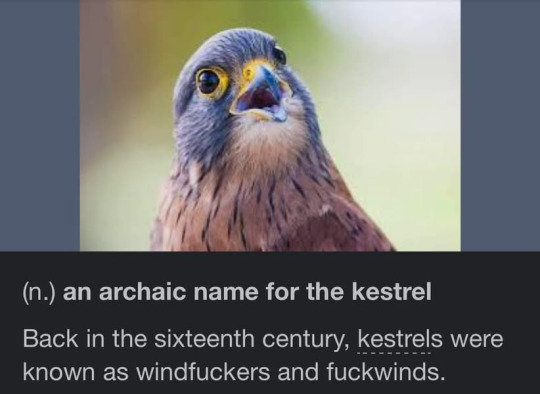
1K notes
·
View notes
Text
Taxon Genesis Evangelion 1: Angels and Evas, Oh My
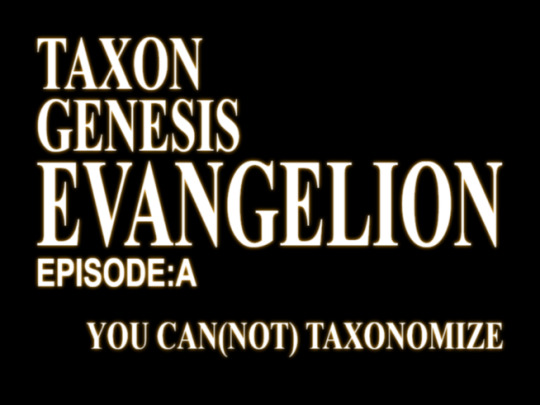
Below the cut: The morphological taxonomicon of Angels and Evangelions; Lilim; and maybe a little something extra for you. All this and more on Taxon Genesis Evangelion!
(If you want to get right to the taxonomizin', skip ahead to the big bold ANGELS header.) The beings known as the Angels present a remarkable challenge to the taxonomist. They are comparatively straightforward to actually categorize on morphological grounds - several families being readily discernible - but are metaphysically provocative. Where the Messenger's Earths present an extremely close divergence from the Mainline Anthropic Cluster of worlds in most respects, they differ strongly on two key points:
The origins of human life;
The function and purpose of the human soul.
The Angels sit at the nexus of these two divergences. The Angel, if local accounts are correct, is essentially a human being that has undergone extreme morphological divergence based on the expression of a distinct pattern in its soul. This divergence is made all the more stark by the existence of multiple overlapping-but-distinct Messenger's Earths, constituting their own parallel Anthropic Cluster of universes tentatively designated as the 'Anno Cluster'.
This is well and good, but where does it leave us taxonomically? The Temple is divided, but tentatively advances the following schema from a strictly morphological perspective:

FIGURE 1: An initial sketch towards a morphological taxa of Seed-derived Life.
All members of this phylum constitute what is locally called a 'Human', though the Temple does not endorse this usage. We instead suggest the use of 'Person', which appears to us to clarify the issue significantly - the Human being referred to the local equivalent of Homo sapiens, while the Person constituting both this species and its many cousins. However, even this convenience can take us only so far, as the persons referred to as Angels are reportedly '99.89%' similar to humans on a genetic level, rendering them no different genetically from a given human than a given homo sapiens is to another homo sapiens.
This, however, is further complicated by the origins of human life within the Anno Cluster's Messenger's Earths - that is, they are panspermic products with an ambiguous relationship to the rest of their biospheres. It is not, at the time of writing, clear whether all Earthly life in the Anno Cluster shares descent from the being known as Lilith, and the Temple tentatively endorses the position that they do not, and that only humans do.
This being the case, it is clear that the local equivalent of Homo sapiens is not quite a conventional example of Homo sapiens. From this specimen we will begin our taxonomy.
LILIM HUMANS

FIGURE 2: Three typical Lilim Humans, the anthropoform inhabitants of the Messenger's Earths of the Anno Cluster. Observe the identical appearance to mainline Homo sapiens, which conceals a radically different evolutionary history.
The Lilim Human is, phenotypically and morphologically, identical to Homo sapiens. This is a case of the common convergent meta-clade of beings called, across universes, 'Humans'. It is a well known principle of universe exploration that along the anthropophilic curve, humans of some variety are a near certainty in every universe, though their precise origins varies. Most, but not all, are Sol-Terranidae - that is, the locational miridomain of [Carbonae] specific to the world(s) of Earth - and have little, if anything, to distinguish them on a purely biological basis from one another.
Given this, we now introduce the mythotaxon utilized for the base, mainline, prolific human: metanthropos generica humanitas. We have previously introduced this elsewhere, in the Taxonomy of the Homeworlds, but find it still a useful category. The corresponding niche taxa is Homo sapiens protagonum.
These two taxa are shared with the vast majority of humans across the Anthropic Cluster worlds. The specific taxa of the Lilim Human, however, is distinct. We observe that they are the direct product of panspermic interference in Earthly life, introduced by Lilith and gifted the Fruit of Knowledge. This origin bears certain cognates in traditional Earthling mythologies and their reflections in other Universes, but it will in turn bear consideration on this first of the 'two fruits' of the Anno Cluster before we formally taxonomize the Lilim Human.
The first fruit, the Fruit of Knowledge, conveys upon the human being the ability to produce itself ad infinitum and, consequently, to know oneself through the eyes of others. This knowledge-of-the-self produces a fixed phenotypical expression and self-awareness along the norms of the reflected metanthropos generica humanitas, including normal cognition - barring a certain innate suicidal tendency in the inevitability of Lilim Humans seeking species-level extinction as part of its drive towards the future, though this has also been suggested as a standard feature of all human kinds (see Spielrein, 'Die Destruktion als Ursache des Werdens', 1912) - and tool use.
We also observe that the existence of the Human Soul is uncontroversial within the Messenger's Earth as a physical reality. This, then, presents a second divergence point from common mainline m.g. humanitas, for whom the existence of the soul is rarely a physical reality even where it is possessed as a spiritual self. The soul is, allegedly, the source of that which produces the barrier between selves and enables the creation of the self's form. No non-Person has been observed to possess a soul in these universes, and they are, to a degree, transferrable and controllable.
This suggests that the Lilim Human is sufficiently differentiated from the mainline to warrant a distinct mythotaxon, as: metanthropos generica sapiens anima-carnogenesis That is, they are generic humans marked out by their possession of a soul that produces the flesh.
Hierarchically, we consider there to be insufficient evidence to warrant a distinct taxa for the Lilim Human, though we acknowledge that the Lilim Human shares no genetic ancestry with other members of the genus Homo. To the extent such a taxa is desirable, it is best recorded as phylogenetic rather than strictly hierarchical - the key difference being that the Temple endorses the hierarchical taxa as clade-ambivalent.
ANGELS

FIGURE 3: A selection of Angels.
The persons known as the Angels are, according to local reports, Human beings who exhibit the many 'alternative' forms that a Human being might possess. We reiterate that the Temple prefers the language of Person to Human for this purpose, as it prevents confusion, though we acknowledge that in the context of the Messenger's Earths the close genetic make up, shared presence of not-incompatible souls, and shared cladistic origins do suggest that 'Human' is not an entirely inappropriate designation for the Angels. However, for the purposes of the Universal Taxonomy, we decline to nominate the Angels as members of the genus Homo.
We do so for two reasons. First, it the morphology of the Angels is wildly divergent from that of their human cousins. While they are nearly identical to any given human genome, the phenotypical expression produced by the nature of their souls - shaped in due turn by the Fruit of Life - is clearly non-human. It is also unclear whether the Angels are capable of reproduction as Lilim Humans are, though the Temple's various factions have largely agreed to waive reproductive viability for the present taxonomization due to the clear morphological patterns within the Angels.
Second, the Angels possess an entirely distinct biology from the Human on a more fundamental level. While they are genetically near identical, they are composed of an alternative form of matter. This, as we understand it, is the product of their receipt of the 'Fruit of Life', which grants the recipient utter self reliance in the form of a removal from the laws of thermodynamics and a source of free energy embedded within what is known as the 'core' of the Angel. They thus bear little functional resemblance to the Lilim Humans with which they are so closely related on a genetic level.
This, then, is the basis for proceeding with treating the Human as distinct from the other Peoples, and taxonomizing the Angels seperately. To that end, we now consider these entities collectively, with specific studies to follow. The Angels are:
Material entities, even where this materiality is comprised of pure energy.
Despite seemingly god-like stature and powers, not of divine nature, but mundane nature.
Alive.
This suggests that all the People, including both Angels and Human, are properly considered to be members of the Vitus and Corporae - that is, they are alive and are corporeal. It is clear that the majority of the Peoples, including most Angels, belong to the Eukaryota and, presumably, the Animalia as complex, multi-cellular life. For convenience's sake, we will nominate the Angels (but not Lilim Humans) as members of a Phase-Wave Phylum, Undamaterialida, though it may equally be suggested that this is best positioned at a higher level below the Corporae but above the Eukarya. But beyond these initial assumptions, a morphological taxonomy appears to be the best approach.
(We might also take the easier approach of assigning a wholly novel superdomain to all Peoples and Angels, but this - though taxonomically simple and not displeasing in its elegance - is something of a lazy tack. If the Angels bore more resemblance to cognate species of demon, angel, and magical being, we would not face this challenge as suitable phyla are already prepared for such specimens.)
Within this morphological study, we can observe certain patterns. First, there is a high order distinction among Peoples between those with clear, discrete and identifiable Cores and those that either lack clear cores or appear to have no core whatsoever.
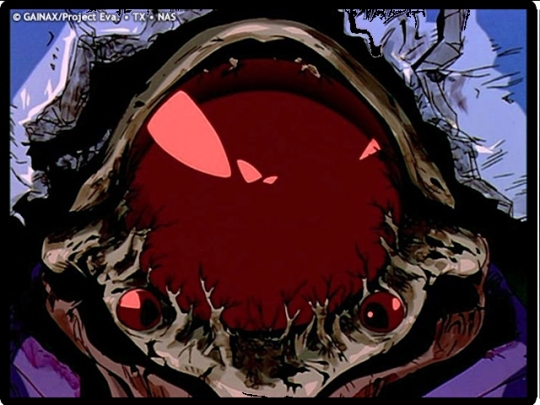
FIGURE 4: The 'Core' of an Evangelion.
In the former we may group most of the Angels, and in the latter, Lilim Humans and the pseudo-bacterial Angels. These we will treat as our classes for the Peoples, and we will tentatively nominate the former Koukyuuvasiae and the latter Akoukyuuvasiae.
THE KOUKYUUVASIAE
Within the former, we are confronted with a dizzying array of datapoints. This is the class of Shamshel and Ramiel and Arael - it is highly diverse in morphology, and identifying the most relevant is difficult. Nonetheless, the Pedant nominates bodily plan as being the next stage. Those Koukyuuvasiae that manifest a hominid-esque bodily plan (and thus, most closely resemble their precursor Seeds of Life, on which we will touch soon) constitute an Order, as do those with a pseudo-arthropodic form and those with what we nominate as 'weird' forms. These three orders we thus nominate as, in the same order previously mentioned: Adamiformes - 'Shaped like Adam'; Thyreoformes - 'Shaped like Shields'; Abstractoformes - 'Shaped like Abstractions'.
The Adamiformes
Within the Adamiformes, we find two families. The first is capable of moderate morphological transformation, comprising Sachiel, Israfel, and controversially, the Eighth Angel. (It is the Pedant's position that the manifestation of an essentially humanoid body at the heart of the Angel's mass is indicative of membership within the Adamiformes.) The latter is incapable, and consists of two members - Zereul, and one outlier we will return to later.
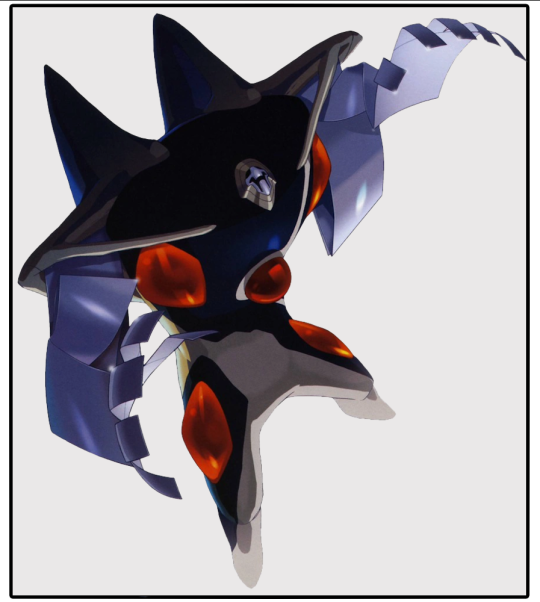
FIGURE 5: The Angel known as Zereul.
Zereul should be distinguished from the similar Tenth Angel, which in its version of the Messenger's Earth takes the same mythological niche as Zereul but which is morphologically distinct, as it lacks the legs of Zereul and manifests certain features from the Thyreoformes instead. No such distinction is present between Sachiel and its counterpart, which we take as indicative of a point discussed in the assessment of the Adams and the Seeds.
We nominate these two families thus: Proteadamiformidae - those capable of changing shape; Fixusadamiformidae - those not capable.
The latter consists of a pair of genera, one of which we will revisit. Zereul is the sole species of the genus Annotokuhostilis as A. sardonicabrutalis, presenting our first complete taxa. We further nominate Zereul with the following niche and mythotaxa, which it shares with its counterpart, the Tenth Angel: Gargantua aforitoanankus flagellator Gargantuahostilis pseudotokuvillainus catharsisogenitor
The Proteadamiformidae consists of two genera. The first is another single-species genus, Stellahostilis, with the Eighth Angel as the sole member, S. evangelocadens. S. evangelocadens is given the following niche and mythotaxa, which it again shares with its counterpart, Sahaquiel: Gargantua astrumamoeba oculariforme Gargantuahostilis astrainvadans eschatogenitor
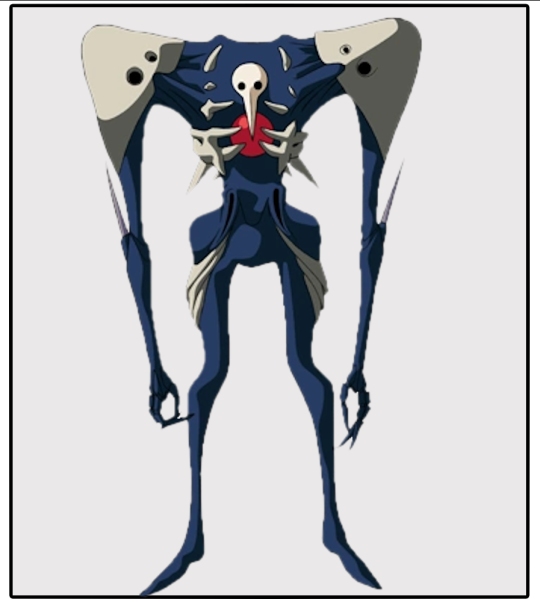
FIGURE 6: The angel known as Sachiel, L. monohastatus.
The second may be distinguished by its ability - common, but not universal, among Angels - to project energy blasts. An alternative taxonomy might consider this in place of the body plan morphology as the Class-level characteristic, but we believe it may spontaneously re-emerge among Peoples as part of their shared heritage and so constitutes a homoplasious characteristic. This genus consists of Sachiel and Israfel, neither of which require much special analysis. We nominate the genus as Luxohastati and their species, respectively, as L. monohastatus and L. geminohastatus. Both share mythotaxa as Gargantuahostilis pseudotokuvillainus generica, but their niche taxa differ, with Sachiel placed as Gargantua megahominidae autocidus, and Israfel as Gargantua metahominidae synchronita.

FIGURE 7: A character map of the Adamiformes, with appended species taxa.
The Thyreoformes
The next major grouping are the Thyreoformes - the Shield Angels. This Order is comparatively stable morphologically and consists of four species split across three genera, distinguished into two families, all of which resemble arthropods. The first of these is the Paleothyreoformidae and the second is the Neothyreoformidae. Unlike most of the Angels, the distinction here appears to be reality-based - we observe the Paleothyreformidae in one reality, and the Neothyreoformidae in a new one, with one cross-over taxa that appears in a morphologically distinct subspecies in both.
Within the Paleothyreformidae, there are two monospecies genera.
The first of these hosts Matarael, a four-legged pseudo-arachnid marked by its ability to spit acid from its ventral eye tearducts and its extremely weak AT field. Curiously, Matarael is adorned with many ornamental eyes that closely resemble Sahaqiuel, and while it is currently understood to possess a core, it is possible that this is not the case. We consider this possibility further elsewhere, in the discussion of Seeds. Matarael is nominated as: Acolytaphalangidus vitriolainfirmus With the niche and mythotaxa of: Gargantua opilionis demipoda Gargantuahostilis monstrumaseptimana oblituses
The second is the equally forgettable Sandalphon, characterized by a curious embryonic cycle that feature an early, Adam-resembling state that recedes into a curious arthropodal arrangement on hatching. When we recollect that the Adams appear to maintain an essentially humanoid bodily plan and that it is the nature of an Angel's soul that shapes their appearance, this seems suggestive that all Angels begin as essentially humanoid and then choose their shape - a property that, taken to its logical extent, suggests there is no actual speciation involved. In such a case, all Angels might simply be taxonomized as Annoangelus annoacolytus, but we will continue our morphological taxonomy because it pleases us to do so. We nominate the following taxa for Sandalphon: Infernatolerans anthroapobolus Gargantua pyromagmataincola paleogreebly Gargantuahostilis monstrumaseptimana oblituses, shared with Matarael.
The third genera, and the sole genus of the Neothyreformidae hosts two species, both characterized by a hardened shell-like carapace, weaponized flagella, and a prominent internal rib structure. This genera, the Costanovis, hosts the Tenth Angel, an analogue of Zereul, and the paired subspecies of the Fifth Angel and Shamshel.
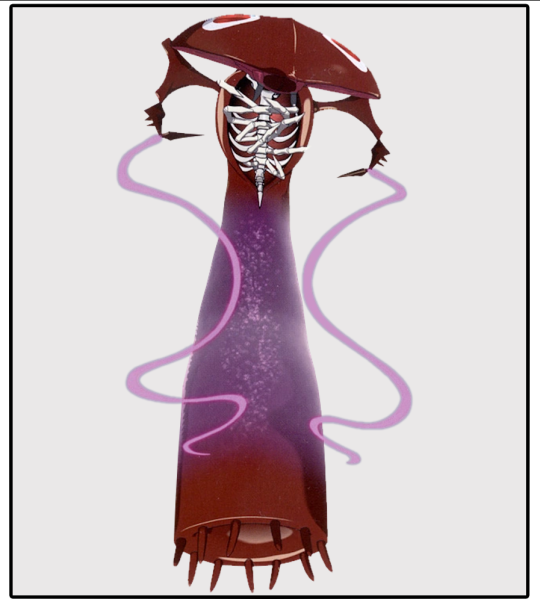
FIGURE 8: The Fifth Angel, C. phallovermis costaexposita.
Shamsel is one of the stranger Angels. This distinctly phallic - and phallic anxiety provoking - entity is characterized by a prominent shelled cephalic segment and an unarmoured body containing the characteristically unusual internal rib structure of the genus. In both cases, these ribs are present - in the Fifth Angel, the ribs are motile and exposed, while in Shamshel they are covered in flesh and static. Both angels utilize energized flagella. They are nominated together as: C. phallovermis, with subspecies costaexposita and costainternus Gargantua phallocorpus Gargantuahostilis monstrumaseptimana castratiometis
The Tenth Angel is easily confused with Zereul, its cognate expression. Both are skull-faced, seemingly intelligent (and malicious) beings that share razor-sharp flagella and a general bodily shape. However, they differ in the absence of legs from the Tenth Angel, distinct colouration, and a highly divergent internal arrangement of the Tenth Angel, which unlike Zereul, is capable of 'unfolding' itself to expose an internal rib cage and an extendible digestive system and jaw structure. The Tenth Angel is a more robust and, in many respects, considerably more horrific counterpart speciment to Zereul. We nominate it as: C. evangelophagus With niche and mythotaxa shared with Zereul as: Gargantua aforitoanankus flagellator Gargantuahostilis pseudotokuvillainus catharsisogenitor
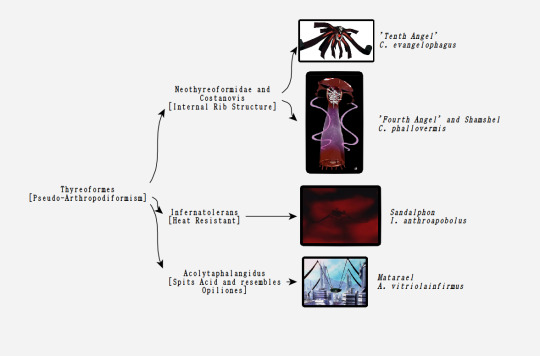
FIGURE 9: Character mapping of the Thyreoformes.
The Abstractoformes
Moving back from the Thyreoformes, two categories remain among the Core-bearing Peoples. The largest are the Abstractoformes, or those Angels with forms best considered abstract in nature. The smaller is a single species order - though we suspect that the 'Third Angel' most likely shared an original morphology with it - of pseudo-Cetacean, and we will briefly dispense with it.
This single species order, the Acolytacetaceaformes, consists also of a single known family, the Acolytacetaceaformidae, and its type species, Gaghiel, is nominated as: Nataramawus dentata Gargantua pesudocetacea anno Gargantuahostilis monstrumaseptimana dentatacetus
Perhaps the most interesting feature of N. dentata is the presence of the ubiquitous 'skull face' on its dorsal surface. This feature is shared with Sachiel, the Ninth Angel, Zereul and the Tenth Angel, the Seventh Angel, and in highly modified form, the first form of Israfel, but is otherwise absent among the Angels. If this feature is not homoplasious - like the energy weapons common to Angels and present among all but one of the skull-bearers - it may indicate that these Angels constitute a distinct morphological family within the Koukyuuvasiae, and as we will explore in the section on Seeds, potentially a distinct Adamic lineage.
The last remaining category of Koukyuuvasiae are the Abstractoformes. Within this Order, we may identify two families, each consisting of a pair of so-far singular genera a single species each. They are the Astroincolidae, or star-dwellers, and the Energetoiactidae, or energy-throwers. The former consists of the Angels known as Arael and Sahaquiel, and the latter, Ramiel and the Seventh Angel.
The core of Arael is somewhat ambiguous, and it has been suggested they should instead be placed among the coreless Angels. Such a reorganization would suggest a closer association with the Angels Leliel and Armisael, as all three are known to possess a level of intelligent interest in human minds. However, there is evidence of a strongly organized core within Arael and so at the present time we decline to do so. It is the sole specimen of the genus Psycheraptor, and is nominated as: P. pravidoaviluxa Gargantua astrumaves lumenoaves Gargantuahostilis astrainvadans traumataregenarares Arael may also be better classified as belonging to the Energy Beings superdomain, but this is so far unproven.

FIGURE 10: The Angel Sahaquiel, or O. autoprecipitaro.
Its sibling, Sahaquiel, is quite unlike Arael. It possesses a body of definite matter rather than of light, and lacks the intelligent interest in human minds known of Arael and co. It instead seems to be a rather curious 'giant eye' that seeks death, sharing in its patterning with Matarael and the Eighth Angel. We nominate it as: Oculudeioanno autoprecipitaro And its niche and mythotaxa, shared with the Eighth Angel, as: Gargantua astrumamoeba oculariforme Gargantuahostilis astrainvadans eschatogenitor
The second family, the Energetoiactidae, is most synonymous with Ramiel, whose counterpart Sixth Angel is not meaningfully distinguishable, suggesting a point of common morphological priority between Adams. Ramiel is best understood as a form of hyper-energetic polyhedral life, characterized by an extremely high intensity AT field. It has been suggested, though it remains unproven, that the sheer force of this AT field is responsible for the Angel's primary octahedral form, creating it as a sort of physical incarnation of the platonic solid of the same shape. Such a model would identify Ramiel with Mercury, and in its secondary forms and their rapid transformation, this appears satisfactory. We nominate the following taxa accordingly: Apostoloplatoniformum mercurohedron Abstractiformes platoniforms octohedrones laserus Gargantuahostilis octusalea empathogenitrix

FIGURE 11: The Seventh Angel, commonly known as 'Clockiel'. Observe the absence of anything resembling a conventional body plan and the curiously industrial appearance of this Angel. The Core is concealed in the large pendulum.
The other member, the Seventh Angel, is rather more difficult to parse morphologically. The closest analogue seems to us to be the stick insects, but even this is a far cry. All that we may say confidently of the Seventh Angel is that it possesses a core, energetic weaponry, and the characteristic 'skull face' of certain Angel lines. It appears to consist of loosely assembled skeletal tetrahedral segments, and but for the strongly demarcated core, might otherwise be better placed among the communal morphologies. Faced with such a bizarre entity, we nonetheless offer a tentative taxonomy as: Horaeacolytus mendaxocephalus Gargantua mekanikavitus fauxclockusfacus Gargantuahostilis monstrumaseptimana horaemookus
The Abstractoformes clade is, perhaps, best recognized as a convenience. We are entirely prepared to accept that it ought to be split further, but have refrained from doing so due to the risk of taxonomic inflation.

FIGURE 12: The Abstractoformes clade of Angel morphology, with special guest Gaghiel. Note the absence of unifying characteristics.
Two more specimens bear consideration before we move on to the Coreless Class of Angels - the Third and Twelfth Angels. Very little is known of these Angels, save that they bear a core. The Third bore a skeleton at one point and retains energetic weaponry, while the Twelfth may be a collective entity or may simply have been altered by an aborted Instrumentality. In both cases, lacking in sufficient information, we can offer no taxa.
THE AKOUKYUUVASIAE
We turn now to the other major category of Angel, the Akoukyuuvasiae, or the Angels that do not host cores. This subgroup of Angels presents certain analytical challenges not present among the other Angels. First, lacking in a Core, can they be meaningfuly said to be of the same category of life as their counterparts? Second, do they stem from the same source?
We can offer only a partial answer to these questions. On the first, they are treated as the same by the local People, which we defer to as a matter of informational privilege of local traditions in the face of ambiguity. On the second, we conjecture that they do, but not necessarily in the manner usually assumed. See the discussion later of the Seeds for more detail.
These caveats aside, we may divide the coreless into two Orders - the Lilithiformes, comprising Lilim Humans and two special specimens, and the Acolytanoviformes, or 'Acolytes of Novel Form'. We have previously discussed the Lilim and will not repeat ourselves here, and so turn immediately to the Acolytanoviformes. Within this Order, we find two Families:
The pseudo-prokaryotes, consisting of Bardiel and sister species, the Ninth Angel, and Ireul, which we nominate as Acolytanovaprokaryotidae;
The amorphous and energy-based Angels Leliel and Armisael, whose Family we nominate as Evangeloamorphidae.
Among the Acolytanovaprokaryotidae, we may distinguish between two genera. The first is that of Bardiel and the Ninth Angel, which appear to be subspecies of the same morphological 'species' expression. Both are microscopic entities capable of forming into colonies with no apparent core that, given access to an Evangelion or presumably Angel, are capable of seizing control over the body. In this sense, they appear to be a parasitic colonial organism. We nominate them with the following taxa: Evangeloraptis anthropocontaminans Funga macrocolonialis mentalocomprimisor Microscopa hostilis friendkiller
Ireul, the other member of the Family, is perhaps the strangest Angel. It, with Israfel, constitutes the only known case of a 'plural' Angel - one that inhabits many forms - other than the Lilim, the Human-analogue of the Anno Cluster. Unlike Israfel, it demonstrated a clear capacity for tool use and complex planning.
This suggests the possibility that Ireul, unlike the majority of other Angels, may not in fact have been the recipient of the Fruit of Life rather than the Fruit of Knowledge. When we compare it to the sole other known example of such a recipient, we find in both cases: A distributed existence with no clear, singular core; Tool use and apparent complex planning abilities; Relatively rapid adaptation to complex environments based on cognition; An AT field that is physically distinct from that of the other Angels in either shape or colour; Suicidal tendencies as a result of its own cognition.
That other exemplar is, of course, the Lilim. The last point bears a brief explanatory note. The known end state of the Human being in most worlds of the Anno Cluster is 'Human Instrumentality', in which a portion of the species rejects individuality in the pursuit of self-annihilation and reunion with the whole as a gestalt entity. This produces an omnicidal event that may or may not include non-human life under its ambit (c.f. Ikuto's divergent 'Anima Universe', in which non-human life is explicitly preserved as part of the broader program of Instrumentality) but which results in temporary human extinction. The ability to conceive of, and pursue, Instrumentality is born of human cognition and emotional capacity, and so we may reasonably speak of a suicidal cognitive bias within the Lilim variant of the broad Human cluster - one shared by Ireul.
These peculiarities aside, we tentatively nominate Ireul as: Metalloincolacolyta ireula With the niche and mythotaxa: Teknovirales hyperintelligentsia anno Macrobacteria fauxandromeda ireul
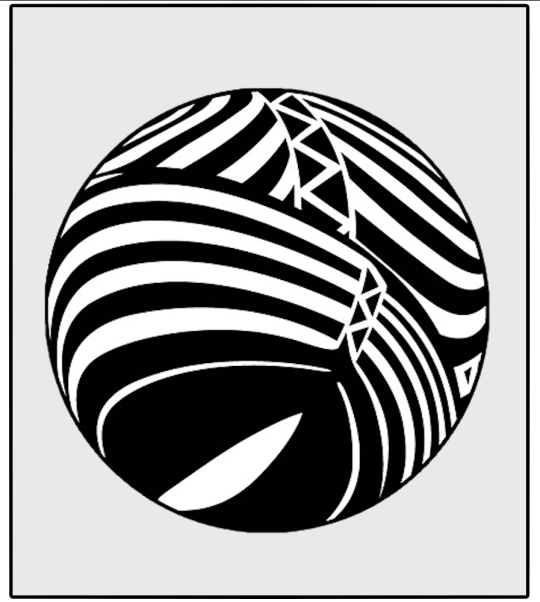
FIGURE 12: The Angel Leliel, or D. dysthymica.
The Evangeloamorphidae consist of two genera, each with a single known species that share a curiousity around Human minds. The first, the Diracidae, harbours the curious Angel 'Leliel', who exists in an extradimensional pocket realm capable of projecting shadows into its mainline physical reality. Leliel's core is not known to physically exist, though it may exist in this extraplanar dimension - in which case, it should be considered Koukyuuvasiae. We nominate Leliel as: D. dysthymica Hostilotenebra portalotenebra dysthymia Mentallometaphorus depressiocatharsogenitor
The other, Heliconoapostolus, consists of Armisael alone, an Angel that consists of a glowing strand of light that, when not engaged in hunting or contact behaviour, hovers in the form of a double helix. Armisael has no apparent core, attempts to rebirth other Angels, and behaves in a most unorthodox manner. The three Angels known to pursue Human mental contact appear to create a curious triad of sexual imagery - Leliel functioning as Egg and Womb, Armisael as physically penetrative Phallus and Sperm, and Arael as a metaphorical act of rape through forcible mental connection - that may be indicative of a shared lineage of the Soul predicated on attempting to fuse with others. This speculation aside, we nominate Armisael as: H. phalloplasmida Abstractiformes plasmidium sexualis Mentallometaphorus libidometaphora anno
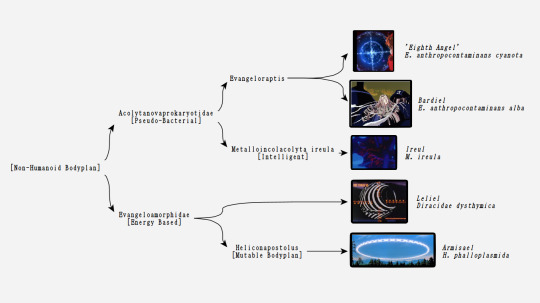
FIGURE 13: The Akoukyuuvasiae clade of Angel morphology.
This, then, is the scope of known Angel morphology, though it is possible that additional Messenger's Earths exist that may require taxonomization. [Read: If you want me to tackle the other, weirder angels - Diemay's angel and so on - ask. This was already too long.] But the Angels and Lilim Humans are not the end of the matter.
Special Subjects: Rei and Kaworu
Having previously spoken of the impact of souls on determining morphology of the Angel, we now turn to two curious specimens: the children known as 'Ayanami Rei' and 'Nagisa Kaworu', who are phenotypically relatively normal (pseudo-albinism excepted) clone-body Lilim Humans possessed of the 'salvaged souls' of two Seeds of Life. Neither subject possesses a known Angel-like Core, though they are capable of manifesting AT fields considerably stronger than those of ordinary humans.

FIGURE 14: Ayanami Rei and Kaworu Nagisa.
It has been suggested that the reason Rei and Kaworu maintain an essentially human morphology - barring certain highly specific events that produce a rapid fusion of them with an extant Seed's body - is that they are 'bound' into Lilim Human form. This idea is not without merit, but we consider it to perhaps be overlooking an equally likely explanation. The basic genetic material of the Angels, and by extension, the Seeds, is human. The bodily plan of all known Seeds is essentially hominid. It follows that the range of morphological expressions of the souls attached to these Seeds is already inclined towards human or human-adjacent forms, and that these forms are perhaps less 'imposed' than 'suggested' to the Soul regardless of the morphological limitations of Lilim Human genetic expression.
This being the case, we find no basis to speciate Rei and Kaworu as non-Lilim Human beings on either the morphological or phylogenetic level. A tentative mythotaxa is provided, however: Metanthropos avatarika annospermae
However, Rei and Kaworu are not the only beings that are the products of Lilim Human cloning and soul experimentation. We now turn to the elephants in the room - the Evangelions.
EVANGELIONS

FIGURE 15: A selection of Evangelions.
An Evangelion, from our study of the Messenger's Earths, is one of three things:
A clone of an Adam - the case in the older Messenger's Earth for most Evangelions - containing a transplanted human Soul;
A clone of Lilith, though we submit that Lilith is not meaningfully distinct from an Adam;
An Adam itself, reshaped.
In all three cases, an Evangelion appears to be a replica Seed that reproduces the genetics of that Seed and an essentially human, but greatly enlarged, morphology (barring minor abnormalities in facial arrangement.) As the products of Seed cloning, it is notable that all known Evangelions possess cores, including Unit-01, which in the earlier Messenger's Earth is the product of cloning Lilith rather than an Adam. We will return to that point shortly when discussing the Seeds, but for now, we note it as a morphological constant.
The Evangelions, we suggest, represent the 'default state' of Seed-derived life. It is clear that their morphology is not produced by a resident Soul, as they retain this morphology prior to the introduction of one to their Core. However, it is also clear that they are altered by human engineering towards a specific bodily plan, and accordingly, we offer them the following taxa as members of the Koukyuuvasiae and Adamiformes. They are the sole species within the family Homoadamofabricidae, and are: Homoadamofabricus evangelion With niche and mythotaxa of: Megacyborgae humaniformida humanobot Metanthropos avatarika gigantarobota evangelos

FIGURE 16: The place of the Evangelions within the Angelic Taxonomy.
A second installment will follow shortly on the Seeds, the First Ancestral Race, and the implications of panspermia on Angelic cladistics.
#fantasy taxonomy#evangelion taxonomy#taxonomicon.angels#taxonomicon.cyborgs#taxonomicon.clones#taxonomicon.giants
20 notes
·
View notes
Text
say it with me: deserts aren't inherently bad. deserts are very important and are home to many ecosystems. you want an unhealthy, over-exploited desert to become a healthy, thriving desert. you don't want an unhealthy, over-exploited desert to become a forest. deserts and forests are distinct, separate biomes that are both indispensable. you want to see them both at their best. and a desert at its best doesn't look like a forest at its best. they're each beautiful in their own way.
42K notes
·
View notes
Text
What's next?
Its audience participation time. Results are non-binding but strongly persuasive.
4 notes
·
View notes
Text
Good news! They're not! They're constrictor snakes, as are the other two members of Acrochordus. They're some of the few aquatic snakes that are completely non-venomous and minimally bitey.
elephant trunk snakes are absolutely ridiculous. That's a creature alright.



36K notes
·
View notes
Text
Acrochordus javanicus is hereby nominated for the following niche and mythotaxa: Aquaserpentis pacificus maximachonkus
Friendserpenti boopablesnootabus
elephant trunk snakes are absolutely ridiculous. That's a creature alright.



36K notes
·
View notes
Text
Fantasy Taxonomy Community
Yeah so this exists now. Wanna pretend you're a naturalist from Faerun? A botanist from Endor? Go nuts. https://www.tumblr.com/communities/fantastic-taxonomy
1 note
·
View note
Text
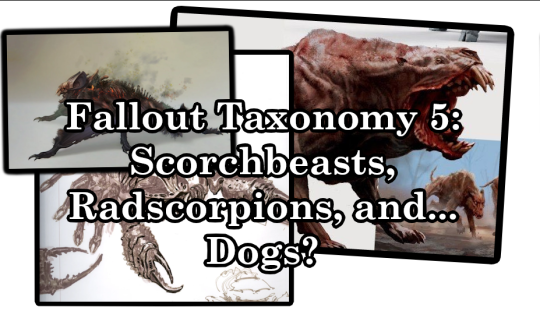
In this final installment of the FEV-spawned creatures, the Pedant turns its eye to three comparatively conventional mutants: the Scorchbeast, the Hound, and the Radscorpion. While other species also exhibit signs of FEV exposure - the giant mantis, the gecko, etc - they are better dealt with under other headings. Read on below the cut!
SCORCHBEASTS

FIGURE 1: An artist's illustration of a typical Scorchbeast (first described by Pagliarulo et al, 2018) attack. Note the unnervingly hominid arrangement of the newly developed second limbs and enlargement of the rear legs.
The Scorchbeast is a mutant bat, but it is a most marked variety of mutant. It has transformed from a tetrapodal beast to a hexapodal one, increased in size by something on the order of a hundred-fold to a thousand-fold, and developed a symbiotic relationship with the disease-causing agent of Appalachian Ultracite-associated Petrification Disease. This presents a modest challenge for taxonomy. It is clear that the Scorchbeast is no longer a member of the tetrapodae clade, requiring membership in a hexapodal sister-order to the Chiroptera.
To that end, we nominate them as the type species of the hexmammalian Secundocheravolariera|radiomutandis order, Macrochiropteriformidae family, with the Genus and species binomial of: Macrochiropteriforme virginiapathogenitorus. Their niche and mythotaxa are in turn: Megalobattus apexus predatorus Pseudodraconus horribilis macrobattus evdomintaeksi
The defining characteristics of the species and Genus are the presence of six limbs, of which the two foremost are adapted for flight with the four remaining limbs enlarged and prominent; diurnal tendencies; eusocial organization; the loss of eyes in mature breeding queens; and a symbiotic relationship with the causative agent of Appalachian Ultracite-associated Petrification Disease, incertae sedis ultracitogenum. Presumably, other species of Macrochiropteriforme hexbats from the Earth of the Black Isles - if discovered - will possess most of these traits, though not the symbiosis with ultracitogenum.
Their exact relation to FEV remains ambiguous, but it offers the clearest explanation for the extraordinary transformation these creatures have undertaken. It is submitted that one of the two known Appalachian strains, combined with the unique properties of Ultracite, produced both Macrochiropteriforme virginiapathogenitorus and incertae sedis ultracitogenum, with the latter being a distinct mutant lineage of FEV. It is also not clear where the genetic interference that produced a simultaneous revision of the bodily plan towards a hominid form, though it is entirely plausible that this has involved the admixture of human genetics into the species.
Though not a part of the Scorchbeasts themselves, the Scorched Plague also merits attention. This disease obeys none of the typical laws of disease from the mainline Anthropic Cluster worlds, and more closely resembles a wide variety of supernatural plagues. This plague produces rapid onset illness, delirium, and psychosis, followed by a lapse into membership in a kind of 'hive mind', progressive tissue necrosis and replacement by an ash-like substance, and most curiously, the progressive growth of radioactive crystals throughout bodily tissues. It is unknown whether the disease is best categorized as bacterial, viral, fungal, or as belonging to another category.
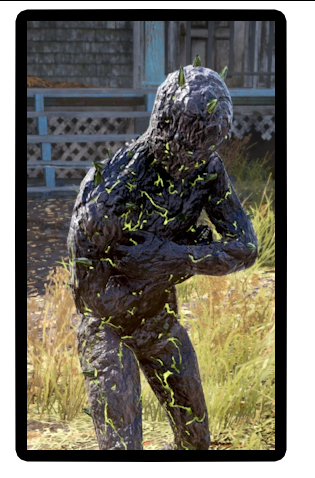
FIGURE 2: A petrified victim. Observe the replacement of all tissue with an ash-like composite of decayed flesh and what may be spores of the disease-causing agent.
Faced with a lack of meaningful information, we nominate the Scorched Plague as incertae sedis ultracitogenum, and for the present time refrain from identifying it formally as a deviant variant of FEV. Its mythotaxa is allocated as zombiformetipathy hivusmindus septaugintasixtus, and the condition it inflicts is nominated as Appalachian Ultracite-associated Petrification Disease. We briefly note that the petrification phenomenon is known to occur only in human beings, and find this suggestive in combination with the possibility that it is human genetics that contributed to the transformation of the legs of the Scorchbeasts that carry the causative agent.
HOUNDS

FIGURE 3: A typical Mutant Hound, first described by Pagliarulo et al, 2015.
The Mutant Hound is to the common dog as the Super Mutant is to the common human. Mutant hounds exhibit the same transformation as their homid masters and are known to arise only from the Appalachian and Boston strains of FEV. It is currently unknown whether they are sterile, though the lack of external genitalia is suggestive of either considerable reorganization of reproductive anatomy or near-complete atrophy of the same.
Relative to the original bodily form of a canine, the Mutant Hound exhibits comparatively minimal morphological alteration. While they possess additional dentition, the overall shape and arrangement of the skull is not markedly altered. No new digits are noted, dewclaws remain present, and sensory organs are as typical. Barring the total loss of fur and the muscular hypertrophy, they are otherwise little different from their Canis familiarus antecedents.
There is little more to be said. On the same basis that we have provided taxa to the Super Mutant, we nominate the Mutant Hound thus: Canis|radiomutans (robusta) muscularis Verticanis gargantocanis Monsteracanis anthropovorus mutandis
RADSCORPIONS

FIGURE 4: An artist's impression of the Capitoline Radscorpion, first described by Pagliarulo et al, 2008. [Adamowicz, circa 2005-2006.] Note the enlarged claws - typical of the Capitoline Radscorpion genus.
The common claim - that all Radscorpions are descendants of the common North American Emperor Scorpion - is poorly evidenced, and hindered by the absence of any such known species. It may be presumed that this is a post-war misnomer of the West African Emperor Scorpion, Pandinus imperator, which was a common pet species and among the largest Scorpions of the pre-war reality. But beyond this pedantic quibble (in which we, as proclaimed Universal Pedants, beg to be indulged), there are certain other peculiarities that prevent a clean nomination of the common Radscorpion as belonging to the species Pandinus imperator alongside its alleged precursor.
First, and most critically, the populations of Radscorpion so far observed are substantially divergent from one another. This suggests that even if all radscorpions properly-so-called share descent, they have subsequently speciated.
Second, several populations have been observed to be oviparous. This is in marked contrast to mainline anthropic earth populations, in which all known scorpions are ovovivparous - that is, they give live birth to offspring that hatch from eggs within their bodies, rather than laying eggs. In a further complication, there is anecdotal evidence of eusociality among Mojave populations, with 'Radscorpion queens' reported (though the extent to which they may be said to be eusocial is unclear.) In isolation, this evolution alone would suffice to mark the Radscorpion as highly distinct.
Third, all known populations exhibit marked morphological differences from Pandinus imperator. Hair is absent from the pedipalps and legs, and most populations exhibit atypical mesosomal segmentation (the North-Eastern population bearing 6, the Capitoline 8 segments, and the Western populations six in a less robust configuration than the North-Eastern.) The tail likewise exhibit morphological differences in different populations, and even the number and arrangement of eyes (10, 6, and an indeterminate number among the Western populations) is markedly distinct. They may or may not rely on book lungs - the altered physics of the Earth of the Black Isle renders the precise anatomical limitation of the book lung unclear.
The evidence is clear. The Radscorpions cannot constitute a single species, nor are they mere Pandinus specimens (marked by seven mesosomal segments and a five-segmented tail - a pattern not known among any Radscorpion populations.) As they satisfy all three limbs of the mutant test, there is both a clear need for, and no barrier to, identifying them as distinct species from both their alleged precursor and from one another.
It appears considerably more likely that the Western Radscorpions are members of the genus Hadrurus or the family Hadruridae, sharing a seven-segmented mesosoma and comparatively slender claws. Accordingly, we nominate them thus: Hadrurus|radiomutans macrocalifornus This species should not be confused with the Mojave Radscorpion, dealt with below, nor the Bark Scorpion.
The more robustly built Eastern specimens we propose as two distinct species, based on their distinct presentation of mesosomal segments, eye configuration, and shared large, powerful and muscular claws. The north-eastern population, having six largely fused mesosomal segments, we nominate as a type species of the novel family and genus Robustoscorpidae Robustoscorpus, as: Robustoscorpus bostonii.
A variety of differently pigmented subspecies are known, including bostonii subsp. sardonicus, the Deathskull scorpion, and the hyperpredatory bostonii subsp. carnopursuans. It has been suggested that remnant populations of Robustoscorpus bostonii in Appalachia represent the original breeding ground of this species, but this is unconfirmed.
The Capitoline population, bearing an additional segment - a neotonous adaptation from the usual embryonic developmental fusion of the eight segments into seven - we likewise nominate as type species of the Elongoscorpidae family, as: Elongoscorpus cyanotus
Sister populations have been observed as far West as the Mojave Desert, though they do not exhibit the aggressive burrowing behaviours of the Capitoline Radscorpion. The Temple is divided as to whether this population is a distinct species or merely a behaviourally distinct remnant population. The Mojave-native 'Bark Scorpion' is largely morphologically non-distinct from Elongoscorpus cyanotus, but is a distinct species marked by a less aggressive venom, a uniform sandy or bark-like pigmentation, and a considerably smaller size. It is accordingly nominated as subspecies cyanotus vittatusiformes.
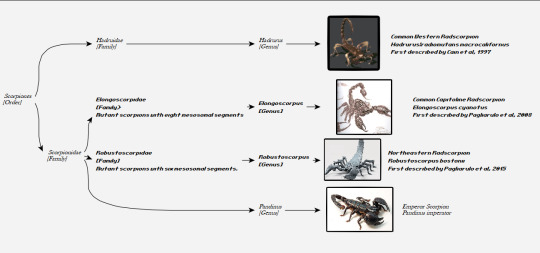
FIGURE 5: A revised taxonomic tree of the Scorpions.
All radscorpions share the following niche and mythotaxa: Scorpus giganticus jumpscaricus Scorpionidae macroscorpo-irradiogenetum cainsii
+++
With that, we close out this entry. Next time - who knows? There are many universes to visit, and the Dragon taxonomy is long overdue.
#fantasy taxonomy#taxonomicon.fallout#fallout#fallout taxonomy#fallout 76#scorchbeasts#classic fallout#taxonomicon.mutants#radscorpions#taxonomicon.giant bats#taxonomicon.radscorpions#taxonomicon.diseases#taxonomicon.dogs
3 notes
·
View notes
Text
Juvenile aurumomimicry and lapidomimicry is a common behavioural trait among both True and False Dragons of the Pneumaterribilis family, though less common among Fauxpneuma and Apneuma branches of the Draconidae. The sheen usually develops during the first or second molt and disappears during the transitional molt between immature and mature scale patterns, where the flexible soft juvenile scales are replaced by durable ferrosquamous patterns. Certain species - particularly those commonly known as 'Gold dragons', 'Copper dragons', and 'Bronze dragons' - retain aurumomimicous tendencies well into maturity.
baby dragons whose scales are much more shiny and iridescent in order to hide in their parents' hoards
66K notes
·
View notes


